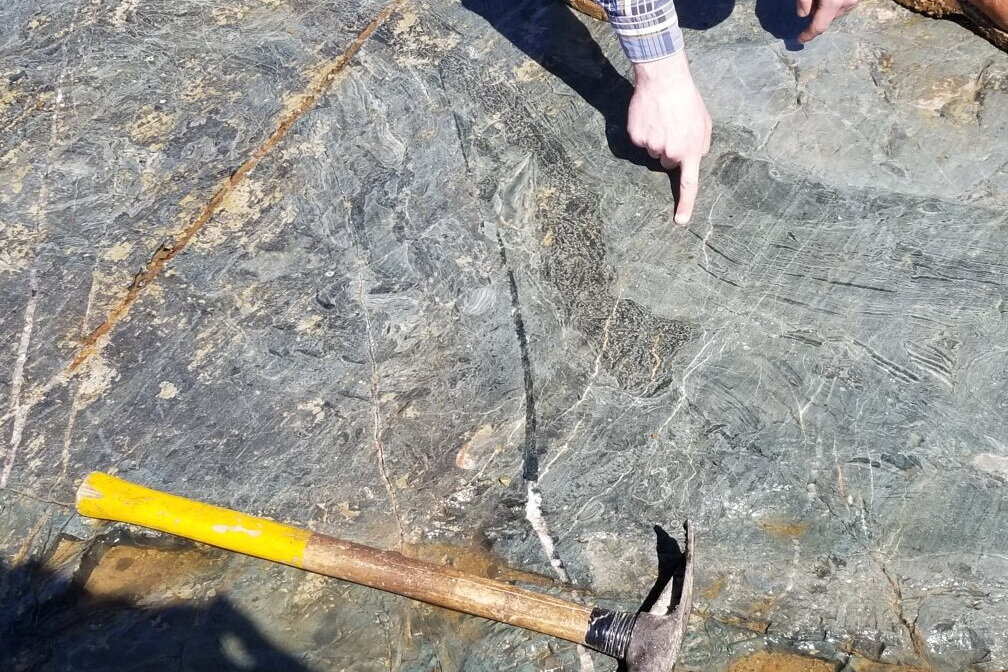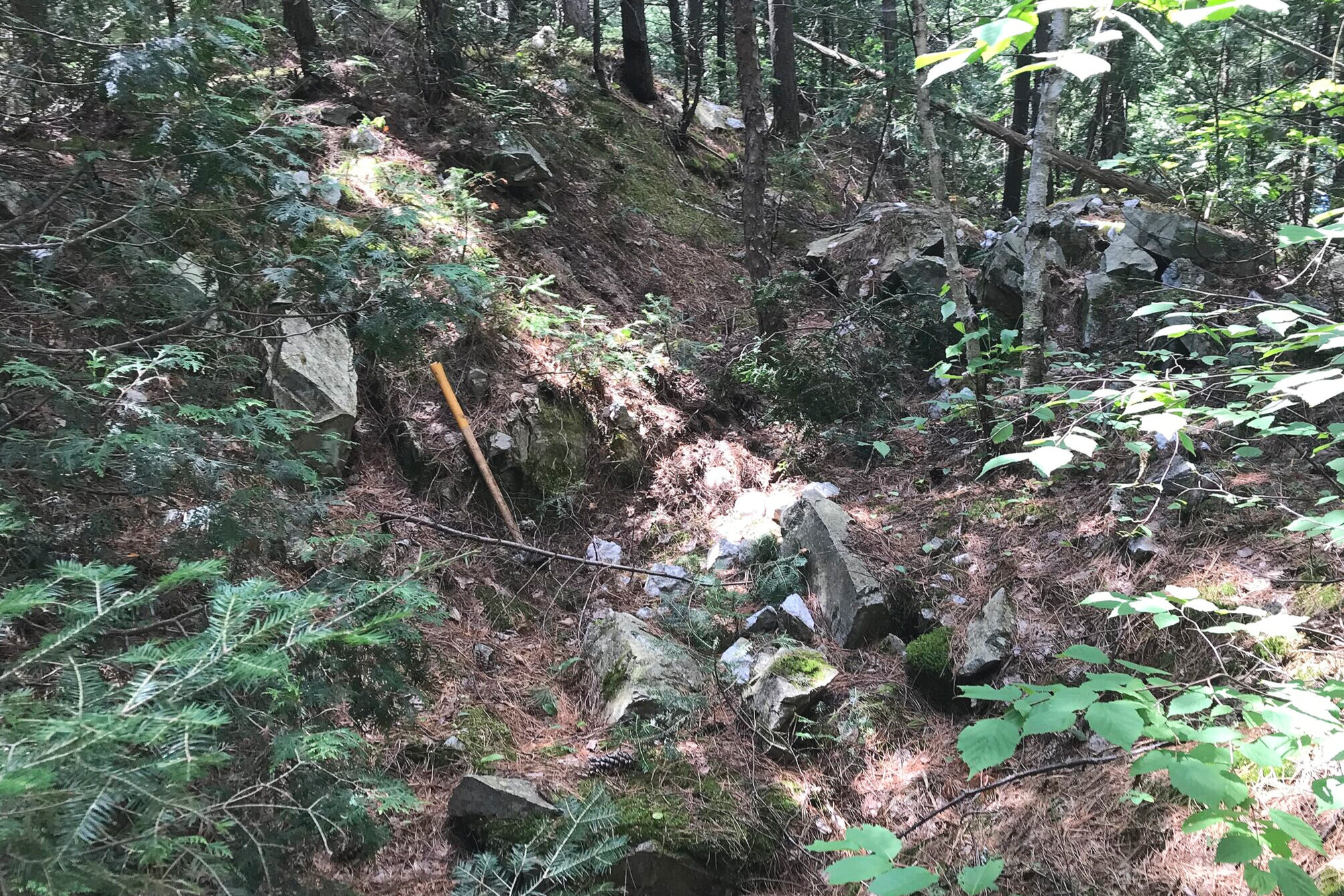The Sudbury 2.0 Project, Ontario, Canada
A NEW EXPLORATION FRONTIER EAST OF THE SUDBURY MINING CAMP
Exploration Target
Inventus' Sudbury 2.0 Project is targeting mineralization above the Temagami Geophysical Anomaly, a large magnetic, dense and conductive anomaly that may be related to the Sudbury Igneous Complex, a world class magmatic Ni-Cu-PGE mining camp. The Sudbury mining camp has produced approximately 1.7 billion tonnes of ore with historic production and current known reserves valued around 1 trillion dollars at current commodity prices. Inventus believes that the Temagami Anomaly, in the east range of the Sudbury Basin, is a mineralized intrusion and could be a source for some of the mineralization within the Sudbury Mining Camp.
Location of the Sudbury Basin and Sudbury offset Structures on the Sudbury 2.0 Property with total magnetic background.
Occurrences
Location of Occurrences on the Sudbury 2.0 Project
COBALT HILL & LAKE ZONE
RATHBUN
DORLAND PROSPECT
CRYSTAL NORTH
BIG VALLEY LAKE
DOON LAKE
BASSFIN
LAURA CREEK
LAURA LAKE
Project Location
Inventus' Sudbury 2.0 Project is located east-northeast of Sudbury, Ontario. The property is easily accessible by road. See map below for general location.
Property Ownership
The Sudbury 2.0 project consists of 240 square km's of mineral claims covering the Temagami Anomaly. Inventus owns a 100% interest in the property. Additionally, Inventus owns 6% of the issued and outstanding shares of Conquest Resources, which holds claims to the east of the Sudbury 2.0 Project Area.
Early Exploration
The Temagami Anomaly was of great interest to Falconbridge (now Glencore) during the 1990's. Falconbridge geologists believed that the Temagami Magnetic Anomaly could be related to a magmatic intrusion. It was thought that the anomaly was an excellent exploration target due to its size, magnetic intensity and location relative to the Sudbury Mining Camp. Falconbridge staked the entire anomaly and conducted a geophysical exploration approach utilizing large airborne, seismic and magnetotelluric surveys that ultimately proved unsuccessful.
Inventus Discovers Sudbury Offset Dykes over the Temagami Anomaly
Since beginning the Sudbury 2.0 Project, Inventus has now identified 4 Sudbury Offset Dykes, a Large 14+ km Sudbury Breccia Belt and multiple areas of mineralized hydrothermal breccia on the property. The first Sudbury Offset Dyke discovery was made in 2017, when Canadian Continental Exploration Corporation (now Conquest Resources) drilled a Sudbury Offset Dyke while targeting the peak of the Temagami Magnetic Anomaly (see link below). This discovery initiated Inventus to stake the property in late 2017. Since that time Inventus has spent two field season prospecting the Sudbury 2.0 property that has lead to the discovery of the Laura Creek Inclusion-bearing Offset Dyke, the Ni-Cu-PGE Rathbun occurrence as an offset dyke (see Rathbun Lake Revisited, 2019), the Bassfin Offset Dyke and discovered multiple occurrences of mineralized hydrothermal breccia.
Geology
The general surface geology on the property consists mainly of rocks of the upper Huronian Supergroup, a 2.45 to 2.2 billion year old sedimentary basin. Other rocks in less abundance are the Nipissing Diabase, a 2.2 Ga mafic intrusive and Olivine Diabase Dykes relating to a 1.28 Ga mafic dyke swarm. The rocks of interest on the property are Sudbury-type quartz diorite offset dykes, Sudbury breccia, exotic mafic dykes of unknown origin and areas of extensive hydrothermally altered and brecciated rocks.
Inventus believes that the Temagami Anomaly is a mineralized intrusion that has caused an extensive intrusion-related polymetallic gold system in the region.
Ore Deposit Model
Inventus believes two styles of mineralization occur on the Sudbury 2.0 Property:
Intrusion-related hydrothermal polymetallic gold mineralization
Sudbury-type magmatic Ni-Cu-PGE-Co-Au mineralization hosted within offset dykes and Sudbury breccia radiating from the Sudbury Igneous Complex
Historical Exploration
Pre 1950's - Individual Prospectors held land claims in a variety of areas on Inventus' property with little to no reports on activities.
1970 to 2011 - Flag Resources held mineral claims over Wolf Lake and various other areas. Flag was focused on breccia hosted Au-Cu mineralization and did not understand the potential of a deep seated magnetic intrusion until the mid 1990's when their company dissolved.
1991 to 2000 - Falconbridge staked the entire anomaly in the 1990's. They conducted some geophysical survey's and drilled one hole that deviated 800 metres from the target and was abandoned without determining the source of the anomaly.
1999 - Wallbridge drilled one hole as part of an agreement with Falconbridge. The hole was called at 1200 metres and the source of the magnetic anomaly was not intersected.
Exploration Plan
Inventus plans to explore the Sudbury offset dykes, Laundry Lake Breccia Belt and the areas of mineralized hydrothermal breccia on the Sudbury 2.0 Property. These prospective areas will be extensively explored and tested to delineate their potential to host significant orebodies.









